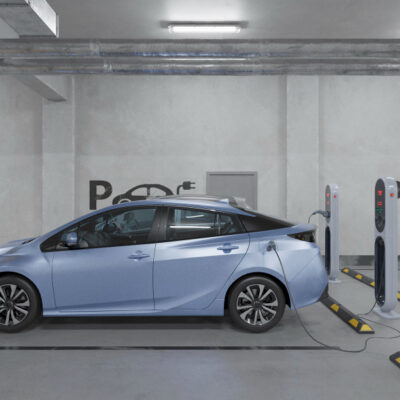Electric cars are becoming more and more popular in everyday life. With their eco-friendly and cost-efficient features, they are a great alternative to traditional gasoline cars. However, driving an electric car is slightly different than driving a conventional car.
Yes, electric cars are easier to drive and maintain, but they have their own set of rules and regulations for efficient driving. To help you make the most out of your electric vehicle, here are 10 tips for driving an electric car efficiently.
If you are new to the world of electric cars, these driving tips will come in handy whether you own an electric car or plan to rent one. So, buckle up, and we’ll take you through the top tips for driving an electric car efficiently.
1. Plan Your Route
The first step to driving an electric car efficiently is to plan your route in advance. Unlike traditional cars, electric cars have a limited range and require frequent charging. So, before you hit the road, map out your route and locate the nearest charging stations to ensure you don’t run out of battery in the middle of your journey.
You can use various online tools and apps to help with this, such as Google Maps or PlugShare. These tools not only show you the locations of charging stations but also provide real-time information on their availability and pricing.
Another important aspect to consider when planning your route is the terrain. Driving uphill consumes more energy, so if possible, try to choose a route with fewer hills or use regenerative braking technology to help recharge your battery while driving downhill.
2. Drive Smoothly
Next, to efficiently drive an electric car, you need to adopt a smooth driving style. Avoid sudden acceleration and hard braking as they waste energy and reduce the range of your car. Instead, try to maintain a steady speed and use the accelerator and brakes gently. This will not only save energy but also increase the lifespan of your brakes.
When driving an electric car, it’s essential to be aware of your surroundings and anticipate traffic situations in advance. This will help you plan ahead and drive more smoothly, resulting in a better driving experience and increased efficiency.
Related Article: Why E-Cars are the Most Eco-Friendly Travel Option
3. Use Eco Mode
Most electric cars come with an eco mode, which can be activated to save energy while driving. When this mode is enabled, the car’s power output is reduced, and the climate control system is adjusted to use less energy. This can significantly increase your car’s range, especially for long drives.
One of the ways eco mode works is by limiting the car’s acceleration and top speed. This means that when you step on the accelerator, the car will not accelerate as quickly as it would in normal mode. While this may seem like a disadvantage, it actually helps to conserve energy and can also encourage more mindful driving.
So, make sure to use the eco mode if you want to get the most out of your electric car’s battery. If you’re unsure how to activate it, consult your car’s manual or ask the dealership for assistance.
4. Precondition Your Car
Preconditioning simply means getting your car ready for the drive before you get in it. This involves using the car’s climate control system to cool or heat the car’s interior to your desired temperature before you start your journey.
This may seem like a small step, but it can make a big difference in the range of your electric car. By preconditioning, you are using energy from the grid rather than the car’s battery to adjust the temperature. This means that you’ll have more energy available for driving, ultimately leading to better efficiency.
5. Keep Your Car Charged
One of the most critical factors for efficient driving in an electric car is to keep it charged. Make sure to charge your car whenever you have access to a charging station, even if it’s just for a short time. This will help prevent your battery from running low and ensure that you always have enough range for your next trip.
Pro tip: It’s better to charge your car frequently and maintain a higher state of charge (around 80%) rather than fully charging it before each trip. This will help prolong your battery’s lifespan and increase its efficiency.
Additionally, consider investing in a home charging station if you have the means to do so. Yes, public charging stations are convenient, but having a home charger will save you time and money in the long run.
Must Read: Charging Electric Cars: What You Need to Know
6. Monitor Your Battery
Another important aspect of efficiently driving an electric car is keeping an eye on your battery’s health. Make sure to regularly check the state of charge and plan your trips accordingly. In addition, avoid exposing your car to extreme temperatures, as this can affect the battery’s performance and lifespan.
If possible, try not to let the battery go below 20% or above 80% charge. This will enhance its efficiency and extend its lifespan. Most electric cars also come with a built-in feature that helps regulate the battery’s temperature, so make sure to use it if your car has this capability. Keep in mind that a well-maintained battery will provide better efficiency and help save you money in the long run.
7. Use Regenerative Braking
As mentioned earlier, regenerative braking is a feature that helps recharge the car’s battery while driving. This technology works by converting kinetic energy into electrical energy when you apply the brakes or decelerate. The generated energy is then stored in the battery and can be used to power the car.
To take advantage of this feature, try to anticipate traffic situations and use your brakes less frequently. Instead, let the car slow down naturally by easing off the accelerator. This will help maximize the use of regenerative braking and ultimately increase your car’s efficiency.
8. Turn Off Unnecessary Features
Just like traditional cars, electric cars also come with various features that can consume additional energy. Some of these features may include heated seats, air conditioning, or entertainment systems. While they may be nice to have, using them excessively will reduce your car’s efficiency.
So, make sure to turn off any unnecessary features when driving your electric car. This will help save energy and increase your car’s range. Additionally, try to open windows instead of using the air conditioning when it’s not too hot outside. This will not only save energy but also help reduce your carbon footprint.
Final Thoughts
As you can see, various factors can affect the efficiency of an electric car. By following these tips and adopting a mindful driving style, you can increase your car’s range and get the most out of its battery.
Moreover, efficient driving not only benefits you but also helps reduce our dependence on fossil fuels and contributes to a cleaner and more sustainable future. So, why not give it a try next time you hit the road in your electric car?
Learn More: Hydrogen Cars vs Electric Cars: Which One is the Future?
FAQs – Frequently Asked Question
What is the average range of an electric car?
The average range of an electric car varies depending on the make and model, but it typically ranges from 200-300 miles on a full charge.
How long does it take to charge an electric car?
This also depends on the car’s battery size, but most electric cars can be fully charged in 8-12 hours using a standard home charger. Fast charging stations can charge some cars up to 80% in around 30 minutes.
Do we have enough public charging stations for electric cars?
The number of public charging stations is increasing rapidly as the demand for electric vehicles grows. However, it is always a good idea to plan your route and make sure there are charging stations available along the way.
Are electric cars more expensive to maintain than traditional cars?
In general, electric cars have fewer moving parts and require less maintenance compared to traditional cars. However, battery replacements can be costly, so it’s important to properly maintain your car’s battery for longevity.
Is it Possible to Drive an Electric Car in Extreme Weather Conditions?
Yes, electric cars can be driven in extreme weather conditions, but they may experience reduced range due to temperature fluctuations affecting the battery’s performance. It’s important to monitor your battery and plan accordingly in these situations.
Can I plug my electric car into any outlet?
It’s important to use the correct voltage and amperage when charging your electric car. While some cars may come with adapters for different types of outlets, it’s always best to use a designated home or public charging station for optimal efficiency.










Why E-Cars are the Most Eco-Friendly Travel Option
Hydrogen Cars vs Electric Cars: Which One is the Future?